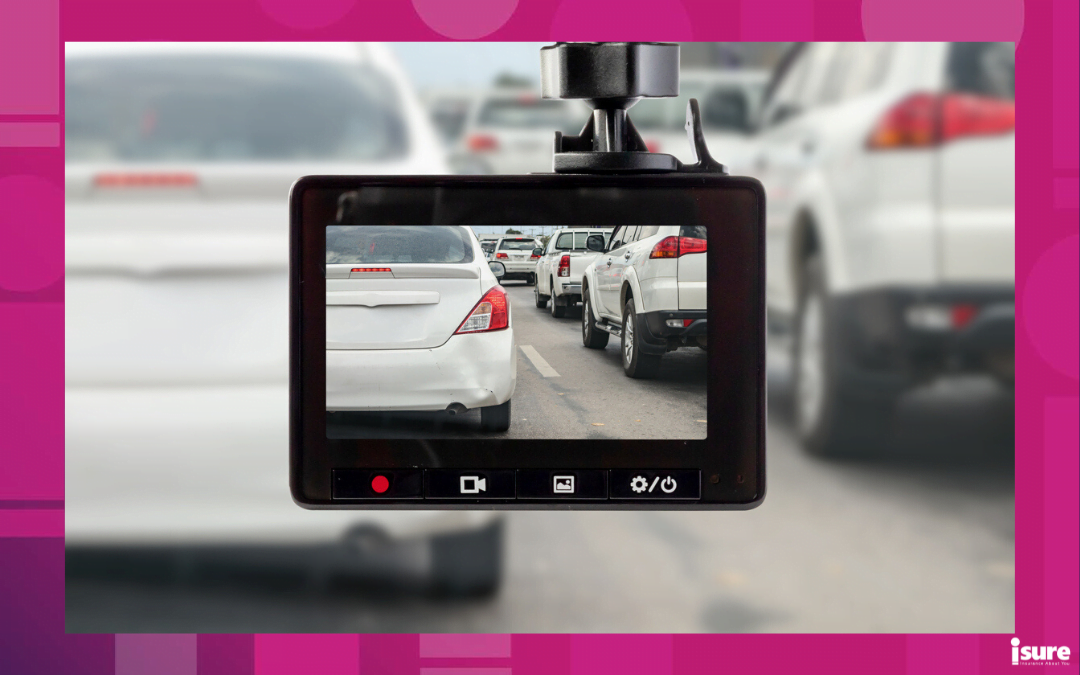Ever find yourself alone while driving and experience a near accident? In the aftershock, you may have thought to yourself, “If only someone could have been here to see this.” Well, if a picture is worth a thousand words, then dash cams speak volumes about what happens on our roads. Dashboard cameras are commonly used in many countries and are gaining popularity in Canada, too. In fact, approximately 10% of Canadians have installed a dash cam in their vehicle. In this article, we will examine why dash cams are becoming more mainstream, and as well investigate the relationship between dash cams and insurance.
What are dashboard cameras?
A dash cam, or dashboard camera, is a mounted camera on your vehicle’s dashboard. The basic nature of a dash cam works carefully and accurately to record every detail that takes place on the road in front of you. Dash cams work by using your vehicle as a power source, recording video whenever the car is on. If you hardwire it into your vehicle, its sensor will detect a possible collision or trigger the camera when it detects motion. By recording continuously, the dash cam can capture footage of any incident or situation, such as a reckless driver, an accident, or even a traffic stop. As long as the camera has power and is on, it will record video of everything within its field of view. Audio is optional, depending on the camera.
How do you view the footage?
You have several options when it comes to how to view dash cam footage. However, options depend on whether you enable your camera using Wi-Fi or Bluetooth. Most come with a removable SD card. To view the dash cam footage, you simply:
- Remove the memory card from the camera
- Put it into an SD card reader that attaches to your computer
- Copy over the files you need
If your camera can connect to the Internet via Wi-Fi or Bluetooth, you may be able to upload videos to the cloud and view them on your smartphone using the appropriate app. With cloud storage, you can more easily store, edit, and share your dash cam footage. Commonly used in police cars and other emergency vehicles, dash cams are being found in more personal vehicles who want to bring along an impartial witness when they hit the road.
How much do units cost?
The dash cams sell between $20 to $500. Installation takes anywhere from two to four hours. Generally, the more expensive units have the most options, including:
- A second camera for the back window
- hHigher resolution picture quality
- Larger storage cards
- GPS for estimating speed
- Wi-Fi connectivity so that you can download the video to a cellphone
Do they continuously record or only when the vehicle is on?
The cameras start operating automatically when the car starts, and run continuously. However, some activate when the engine is off if they detect motion or an impact, such as when the car is struck by a vandal or another vehicle. The memory cards are overwritten as they fill, so you’ll have to save a file separately if you want to keep it.
Features to look for in a dash cam
Depending on how much you’re willing to spend, dash cams can come with a bunch of cool features. On top of parking mode, other features can include a front and rear camera, night vision and Wi-Fi. There are even some dash cams out there with built-in GPS, allowing them to track both speed and location. Some units can even notify you when it’s a good idea to slow down (and possibly avoid a collision).
Where do you install a dash cam?
Most likely you’ll be installing the dash cam yourself (although some car manufacturers are beginning to offer dash cams as an accessory). Depending on the unit you go with, you can mount it to your dashboard or your windshield. No matter where you place it in your car, be sure its securely installed and leave it alone while driving. Fumbling with your dash cam while driving can result in a distracted driving ticket, leading to an increase in your car insurance premium, or worse.
Do dashboard cameras only work while you’re driving?
This will depend on how you power your dash cam. If you plug in your dash cam into the auxiliary power outlet, then your dash cam will likely only record after turning your car on. Other set ups can allow your dash cam to record while your car is off. For example, some dash cams have what is known as “parking mode,” which allows the dash cam to turn on when it senses motion outside the vehicle. This feature is helpful to identify vandals or drivers fleeing the scene of a hit-and-run accident when your car is in park.
Are dash cams legal in Canada?
It’s becoming more and more common to see dash cam footage online or even on the news. In general, you are legally allowed to drive with a dash cam in Canada. However, be sure that your dash cam does not obstruct your view. It’s important to note that depending on where you live, it can be illegal or have restrictions, so be sure to do your homework. There’s no privacy issue because the roadway is considered a public place. Courts typically consider dash cam video to be admissible as evidence.
Dash cams and insurance: Are they covered by your policy?
Coverage availability will depend on installation; both where in the car and how. For example, if you permanently install a dash cam in the province of Ontario, it may be covered under your auto policy’s $1,500 limit for electronic equipment (that wasn’t factory installed). It’s best to double check with your insurer or isure representative. In other cases (such as if you’re using your phone as a dash cam), it may be covered as a personal belonging under your home policy. It will depend on its value, the reason for the loss and your home policy’s deductible. Insurance companies usually look at coverage for your belongings under both of your policies.
Will a dash cam lower your insurance?
If you’re wondering if installing one will lower the cost of your insurance, the short answer is no. According to the Insurance Bureau of Canada, insurance companies don’t offer premium discounts for dash cams just yet. However, they might in future if they find the cameras reduce the risk of having to pay out a claim. However, depending on what province you live in and how you install it, you may find coverage for it under your policy (as mentioned above).
Although there is no discount for a dash cam, it can indirectly impact your insurance premiums in a few ways:
- Determining fault in an accident and other crash details: An at-fault accident can result in your insurance premiums going up. A dash cam acts as an extra witness in assigning fault for an accident.
- Dispute tickets on your record: You may be able to use the footage to dispute a driving ticket that could otherwise increase your car insurance premium.
- Catching insurance fraud: Fraud rings and staged accidents are a danger to everyone on the road. Dash cams are another way to help protect against insurance fraud. Cameras are a preventative measure that can show what really happened. In the long run, it may help to deter fraudulent acts and, as a result, keep premiums affordable for everyone.
- Becoming a better driver: You can use the footage to help improve your driving skills, or those of your newly-licensed driver. You can watch the recording back to see what you can do better in the future.
Dash cams provide security and peace of mind while on the road by recording your surroundings. In the event of an accident or traffic violation, your dash cam will provide evidence of what occurred. Be sure to speak to one of our isure representatives to determine if your dash cam is covered by your home or auto policy, and the connection between dash cams and insurance.




